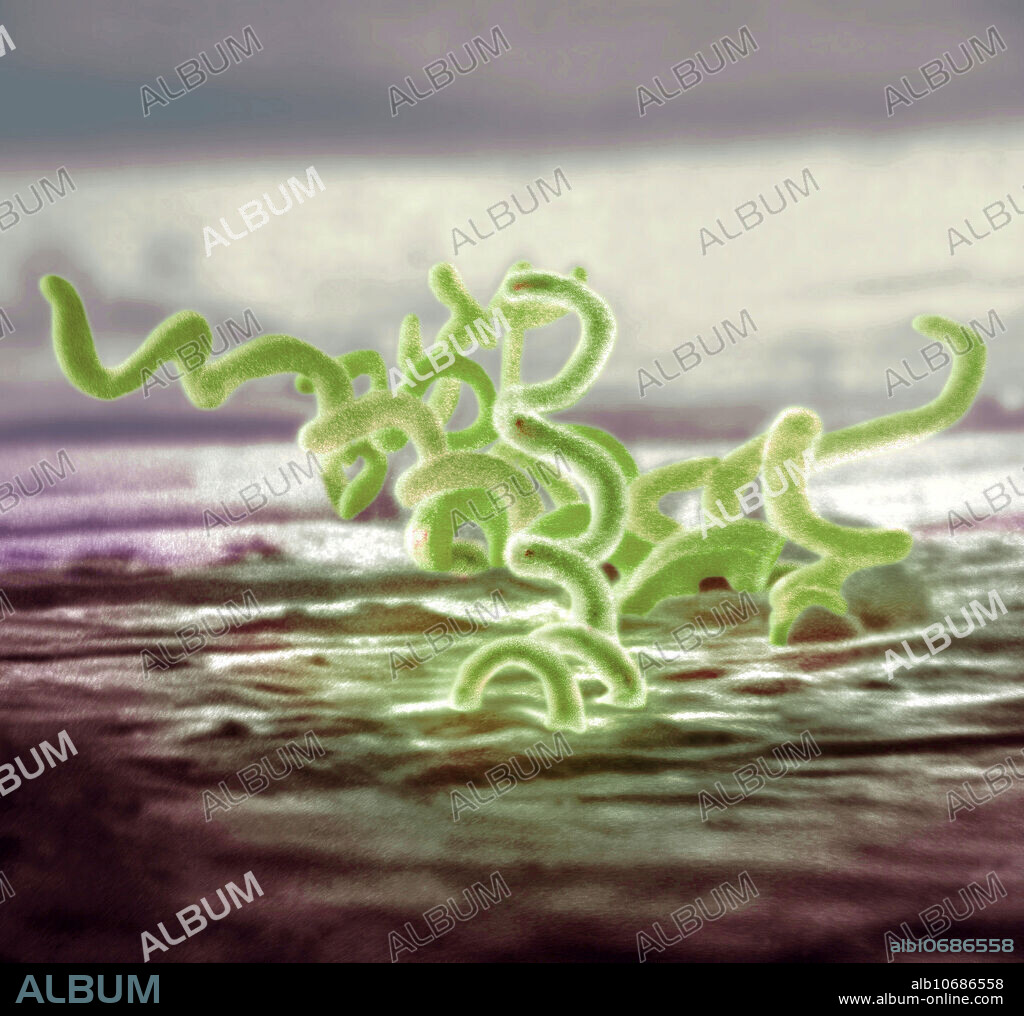alb10686558
Bacteria, Treponema pallidum, SEM

|
Add to another lightbox |
|
Add to another lightbox |



Buy this image.
Select the use:

Title:
Bacteria, Treponema pallidum, SEM
Caption:
Scanning Electron Micrograph of Treponema pallidum on cultures of cotton-tail rabbit epithelium cells. The cause of syphilis, this microscopic bacterial organism is called a spirochete, a worm-like spiral-shaped organism that wiggles vigorously when viewed under a microscope. Treponema pallidum was discovered in 1905 by the German bacteriologist Fritz Schaudinn (1871-1906) who named it, putting together the Greek trepo (I turn) and nema (thread) with the Latin pallida (pale) to make a pale turning thread. In the United States, over 35,600 cases of syphilis were reported by health officials in 1999. Colorized version of image number BB7455.
Credit:
Album / SCIENCE SOURCE
Releases:
Model: No - Property: No
Rights questions?
Rights questions?
Image size:
2553 x 2400 px | 17.5 MB
Print size:
21.6 x 20.3 cm | 8.5 x 8.0 in (300 dpi)
Keywords:
BACTERIA • BACTERIAL • BACTERIUM • COLOR • COLORIZED • ELECTRON • ENHANCED • MICROGRAPH • MICROGRAPHS • MICROORGANISM • ORGANISM • ORGANISMS • PALLIDUM • PATHOGEN • PATHOLOGY • SCANNING • SEM • SEMS • SPIROCHETE • SPIROCHETES • SYPHILIS • TREPONEMA
 Pinterest
Pinterest Twitter
Twitter Facebook
Facebook Copy link
Copy link Email
Email
